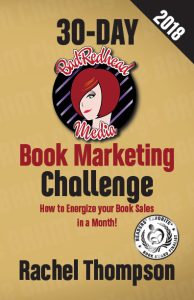What’s in it for Your Readers When you Spam Them? Nothing. How to Do Better Now
I don’t know about you, but I receive hundreds of AutoDMs (automated direct messages) on Twitter, or private messages on Facebook, or private messages on Instagram, or emails, or some kind of autogenerated spam repeatedly, throughout each day, everywhere from authors:
- Can you please review my book?
- Can you enter my giveaway?
- Can you follow me on Twitter, Facebook, Instagram, and subscribe to my newsletter?
How many of you ask this of your followers on a daily basis? How many of you are the victim of this on a daily basis?
What’s interesting to me is that I’m not these authors’ demographic (worth noting: authors ARE my demographic). I’m another author. So, what’s their strategy? Who are they targeting? Are they targeting at all? Why are they spamming every single person who follows them with these same messages?
If you ask them, they’ll insist they’re not spamming *shocked face* — they’re providing much-needed information. Riiiiight.
And most importantly, with this barrage of auto messages from many people daily, what’s in it for the reader? Why would a reader want to go out of their way for someone they don’t know at all, and do something that’s time-consuming (e.g., read your book, write a review, subscribe to your newsletter) and risk their free time, when they have a life that’s already time-consuming, full of other firm commitments? They won’t.
What’s In It For the Reader?
I think you’ll agree with me when I say this is the laziest of lazy marketing. There’s no story, no context, no value. I promise you there are easier and more effective ways to connect with readers and I’m going to give you specific tips today to do just that.
You need to do better if you want to earn your readers’ attention. How? Let’s deconstruct.
Remove your AutoDM
First things first: remove your automated welcome message.
I wrote an article awhile back about all the different options besides an AutoDM you have to welcome new followers (regardless of the channel), which you can read here. Each channel offers many visual opportunities for you to let readers know what you do and who you are, so employ those. Make your branding clear. An automated message is a cockroach, and is, in all likelihood, causing you to lose followers.
Quick Tips: Instead of an auto-message, interact with people, retweet or share someone’s post, visit their blog and leave a comment. Social media is about being social and building relationships. An auto-generated message is the complete opposite of that. Provide rich, value-added content.
**Reminder: don’t click on links in DM! This is a great way for hackers, scammers, and phishers to gain control of your account. They will frequently ask you to provide personal info (email, passwords, etc.) and boom, you’ve given away crucial account info. Often, all it takes is a simple click and you’ve downloaded a virus. Simple solution: unfollow or block.**
Provide Rich, Value-Added Content
We’ve discussed content marketing here and on the recent #BookMarketingChat with Aaron Orendorff (links provided so review both if you haven’t already). As writers, our job is to market our work (like it or not — get over yourself if you think you don’t have to market — there are no magical fairies waiting to do it for you unless you hire us).
Marketing is not spamming links. Spamming links is spam.
No matter how you dress it up, call it something else, or rationalize it in your head, sending repeated links to readers to ‘Buy my book!’, it’s still spam.
This is where you step up and learn about content marketing for authors, which is about helping others, not yourself (though in a way it does). Providing rich, value-added content that helps people learn about various topics (whatever it is that you’ve decided is interesting to you and want people to know more about) ultimately helps people want to follow you and learn more about you — ergo, read your blog and buy your books.
See how that works? Pow, boom, mind exploding.
Quick Tips: To quickly find branded content to share, use free apps like Right Relevance, UpContent, Flipboard, or try this new social media management tool, PromoRepublic.com. It’s like Hootsuite, Buffer, and Canva all combined into one, with scheduling, content suggestions, and pre-made visuals you stick your logo on. Here’s an example below. You can click here for a free trial.
**Full disclosure: This PromoRepublic.com link is an affiliate link. I also think it’s totally awesome. You don’t have to use my link to sign up but if you do, I’m grateful.**
Here’s another cool visual showing my book as a logo (plus the visual is pretty):
Offer Something Unique To Your Readers
In our last #BookMarketingChat with Barb Drozdowich, we discussed how to make our newsletters interesting. What most authors focused on, however, is how to increase their newsletter sign-ups. I’m here to tell you, it’s not a numbers game. My lists are not huge and I’m cool with that. Why? Because my open rate is good, and my unsubscribe rate is very low.
I have a dedicated, core group of fans and readers, and I don’t spam them with unnecessary shit that’s stuck on The Rachel Channel. I offer them unique tips I don’t offer anywhere else, recommendations for books and articles I’ve found helpful, and insider information I want to pass along. (If you want to sign up for my newsletter, here’s the link.)
Quick Tips: When my new books are getting close to release, I provide snippets only for their viewing, ask them politely with my inside voice to sign up to beta-read, and inform them about any contests or giveaways. It’s important not to demand people take time away from their lives to do things for me — if they want to help, cool. If I’m adding increased work to their day though? Not cool.
More on newsletter tips here from Barb.
Write Great Books
None of the above matters if your books suck. I had a great chat with Kristen Lamb recently, and we discussed how our first books needed a lot of work. Even born writers write terrible first drafts. And second drafts. And on and on and on.
In fact, my first two books aren’t even available at this point because I feel my writing is a lot better now — some of the writing is those first books might be salvageable and I may work some of it into future books with major editing (not sure yet), but I have enough humility to realize it needs work, and may never see the light of day again.
Writers need to be humble. If your work isn’t spectacular, don’t release it. Work with a critique group, ask beta-readers to give you feedback, hire a terrific editor, and make your book amazing before you release it. If it’s not where you want it to be, wait. I truly believe our books let us know when they’re ready for the world to read them.
Whether you go self-pub, hybrid, or traditional (I’ve done all three), the marketing process is the same — on you. Publishing companies don’t do all your book marketing and PR — even for hugely popular writers (why do you think J.K. Rowling and Stephen King are on Twitter?).
Do the work.
Final Thoughts
Writers say they don’t have time to market their books, so that’s why they spam links on social media. Sadly, this is how that rationalization comes across to readers:
- I can write a book, but I can’t write a tweet.
- I have time to write a book, but I don’t have time for readers.
- I’m more important than my readers.
- I matter more than readers do.
Change your paradigm, writers. Make time for your readers if you want your readers to make time for you.
For a more detailed plan on developing your book marketing,
purchase Rachel’s new book,
The BadRedhead Media 30-Day Book Marketing Challenge now on Amazon!
Already a 5-Star Reader’s Favorite!





Today I unfollowed three people who greeted my follow with DM intro videos about a free resource they were offering. The link was to a video that had another link to get the free resource. I knew nothing about these people, but to get their resource they wanted me to supply not only the expected email address info, but they also wanted my phone number. No way!
I’ve also had several DM’s from people wanting me to check out their books. I guess they don’t want to compete with all those who just tweet about their books. I agree this is a poor way to market.
I guess I’m old-fashioned, but I don’t like watching videos or getting information from podcasts. Reading is faster. I’m hoping written blogs don’t completely disappear in favor of other media forms.
Hi Barbara — I’m so glad you brought that up! Clicking on links in DMs from people you don’t know is a great way to get your account hacked. I’m going to add that right now as a caution (appreciate the reminder). NEVER click on links from someone you don’t know. So many people lose control of their account that way.
As to your comment: it’s so common now, and as I say, lazy, especially when there’s no strategy or context. Sigh. 🙁
I guess I need to be more careful. I’m usually not afraid to click on links to blog posts that seem to come from responsible people. You have to meet new bloggers somehow.
Barbara, I, too, find videos and podcasts too time-consuming. I read far faster, especially when I skim for content that interests and engages me.
Rachel, I agree that auto-DM’s are obnoxious. They indicate that the sender has taken no time to get to know me, my interests, my focus.
[…] Bacon shows how to write an author Q&A that compels readers to buy, Rachel Thompson explains how to reach your readers without spamming, and John Doppler explores identifying and managing online […]
YES!!!!!
[…] How to Talk to Your Readers, Not Spam Them […]